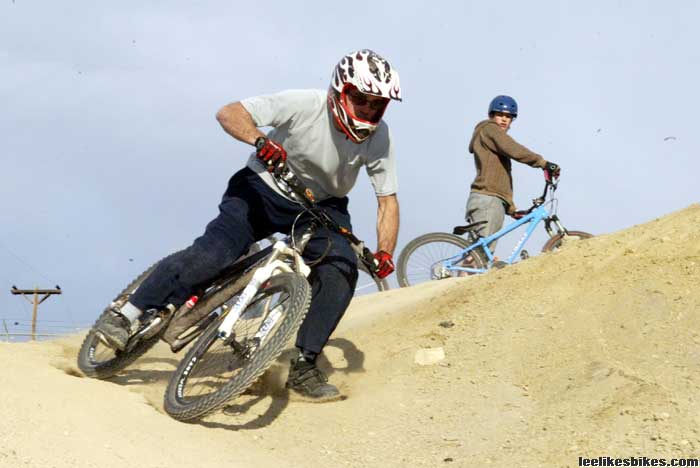More weight forward on an all-mountain hardtail?
Hi Lee. I am reading your book. Love it! Your skill and experience are unquestionable.
My question is: You say keep the weight into the BB at all times to keep balance. I have heard magazines here in the UK say some hardtails make possible a more weight forward position and this works well as you can “lean on the fork”, and allow the rear wheel to be lighter to skip over things and generally dance about while the front stays glued and where you want it to go. The rear just follows in its own way!
I’m from England and have recently got a Ragley Blue Pig. A big step up from my previous XC bike. I think you should check them out. They are more all mountain hardtail than anything. Really strong, stiff, super slack front end (67.5 sagged, 65.6 no sag – 140mm fork,sagged 40mm), and SUPER steep seat angles for climbing. Long top tubes designed to run really small stems and super wide bars. Optimized for 130-150 forks.
When I tried what you mentioned on it, it felt the rear wheel was getting hammered and I felt like I might be getting more beat up (than normal!). I am wondering if I would be best putting a little pressure on the bars as well for this kind of bike? And if I do, would I do this at all times, inc. for braking? And how much would “just a little” be?
I know you are the best man to ask for this.
Thanks,
Andrew.
Hey Andrew,
Thanks for the great question (Please folks, no more “I am totally bad ass and go big, should I buy a black Epic or a red Demo?”).
And thanks for the compliments. You know how to butter someone up while telling him he’s wrong!
Thoughts:
• Your Blue Pig looks awesome. I was looking into something like that (or an On-One 456 Ti, oh man) when I was scheming Captain America. Alas, Specialized is not playing in that market (but I’m nudging 🙂
• I’m dogmatic about Light Hands, Heavy Feet because most people are way too far forward (until they’re scared, then they’re too far back). By mastering Lights Hands, you learn to maintain a neutral balance. From there you can intentionally work the front and back of the bike — but these deviations must be intentional, not habit.
 The P.3 isn’t all that slack, but the weight-forward concept applies. |
• When you’re cornering a slack bike, some weight-forward action can really help stick the front end. But: You better master cornering with neutral balance before you start bench pressing 300 in the turns. See Weight distribution for turning.
• I’ve been riding Captain America on trails. He’s not an all-mountain hardtail. He’s light, steep and stiff — especially with that Fox 831 firmed up. I guess he’s a “smooth part of the mountain hardtail.” But: Even in the gnarliest sections, I find the most smoothness and flow with Light Hands.
Caveat: My shoulders are imploding. The less I use them, the better.
• Keep in mind that being too far back will pummel you just as hard as being too far forward. Are you sure you’re in the middle? Are you maybe a bit too far back? The sure test: Loosen your grip and see whether you fall forward, fall back or stay in attack position.
• When you brake, try to drive the net force into your feet, not your bars. That means light hands. On a hardtail, it’s extra important to pick smooth braking points. If you have to brake in roughness, I suppose you can bleed some of that force into your fork, but it’s dangerous and takes a lot of upper body energy.
• On a hardtail with slack geometry, a short cockpit and a big fork, I can see the sense in “leaning on the fork” in short rough sections and definitely in the turns. The big thing here is do it with intention. Intentionally ride the fork when you rip a turn or pump a rock garden. Do this with deliberate, graceful violence — on a case by case basis — then return to neutral position.
• If you lazily camp out on the front of the bike, you will end up too far forward, and your riding will suck.
Do those last two points make sense? I think this cuts to the heart of your question. Yes: Work that fork. But: Do it intentionally.
This is about the best I’ve seen a hardtail (or really any bike) ridden on gnar. You can see him — especially in the crazy sections — working that front end with graceful violence. But check out how balanced he looks (light hands and supple arms) everywhere else.
What do y’all think?
— Lee
Know more. Have more fun!
Join the leelikesbikes mailing list:

Comments are closed.